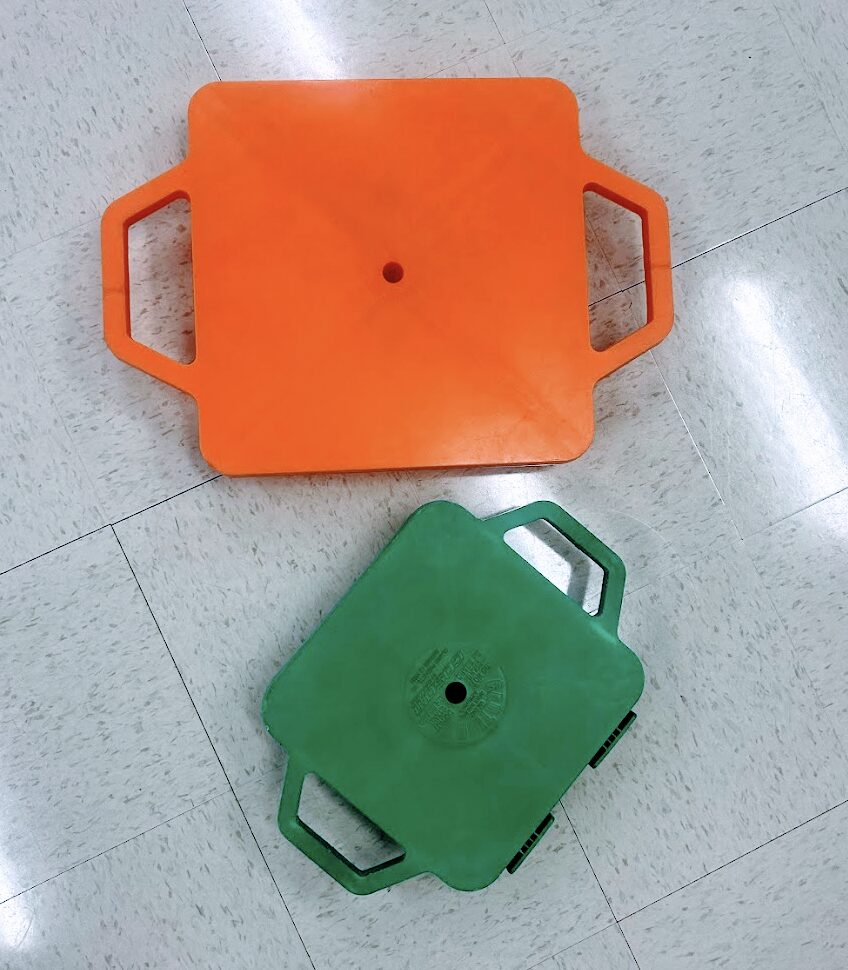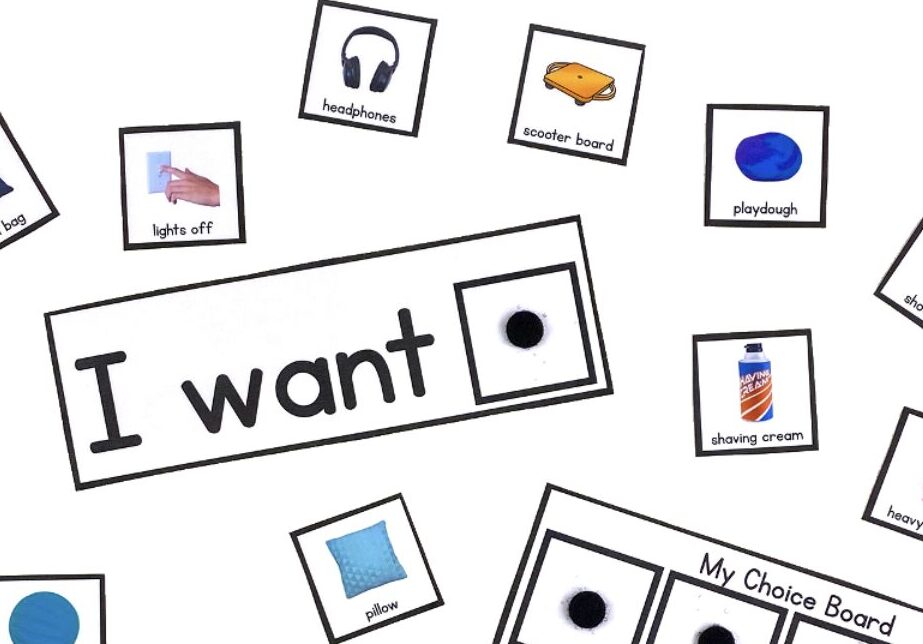

Do you want to keep your occupational therapy (OT) sessions fun and beneficial? With the use of a scooter board, your kiddos will be engaged and building a variety of skills! Our therapy department has a few in our sensory rooms to use during OT sessions. You could also probably borrow them from your physical education teacher! Here are five simple ideas for activities that use a scooter board!
1. Scooter Boards in a Sensory Routine
Scooter boards, depending on how they are used, can provide vestibular [movement] and proprioceptive [deep pressure] input for students. Movement seekers often benefit from linear scooter board activities during sensory breaks. If students pull themselves while on their stomachs on the scooter board, it adds an element of heavy work that can be even more regulating. Simply Special Ed’s Sensory Self Regulation Toolkit includes visuals to support students in choosing sensory-based activities to support their ability to learn in the school environment. I have a blog entitled What is a Sensory Menu? that describes how I use this resource in the development of my students’s sensory programs/diets.


I have another blog discussing the ins and outs of “sensory diets“. I often include scooter board activities as part of my students’ sensory schedules or menus.
2. Fine Motor Warm Up
School-based OT sessions often include development of fine motor skills. Proximal stability [think things like shoulder and core support/strength!] is necessary before a student can develop fine motor dexterity. Scooter board activities are a great way to work on these skills as a gross motor “warm up” to a fine motor session. I often incorporate scooter boards throughout the session as well! In the below photo, I have uppercase letter magnets spread around the room for the student to collect prior to instruction on how to form each letter!


Consider using these FREE file folder letters for your next scooter board “scavenger hunt”!
3. Scooter Board Activities for Toe Walkers
Do you have students who toe walk? Encouraging dorsiflexion of the foot can be a good way to address this concern through strengthening. One of my favorite ways to do that is by playing games seated on a scooter board [using feet to move]. The student points their toes towards the ceiling [dorsiflexes them] and moves with their heels. We do scavenger hunts, races and more! You can get as creative as you want with this!


Check out my blog for more tips on supporting toe walkers for more ideas that use a variety of tools outside of scooter boards.
4. Scooter Boards During Dressing Activities
OTs are often addressing activities of daily living (ADLs) which can include dressing. During extended school year (ESY) this summer, I created a “circuit” for one of my students who had goals for clothing fasteners and donning/doffing clothing. The clothing items were at one end of the room and the student scootered over to pick one piece and bring it back to the table to complete! The added movement made the session so much more fun!


5. Obstacle Courses
Obstacle courses are one of my go-to OT interventions! You can literally include ANYTHING in an obstacle course depending on each students’ goals! One of the easiest [and arguably most beneficial] transition tools in an obstacle course is a scooter board! Have the student maneuver on their stomach or bottom. Have them hold onto something and be pulled! They can lay on their back and pull themselves across a jumprope hung above them. The possibilities are endless!


Check out my blog on how to build skills using obstacle courses for a few more ideas on how to include these types of activities in your sessions!
There are a million way to use scooter boards for therapy! Share how you are using them in the comments! I hope these suggestions have gotten your wheels turning for how to incorporate more scooter boards into your sessions!










1 Comment
Легко и быстро забронировать отель в сервисе онлайн-бронирования. С помощью современных сервисов вы можете легко выбрать отель и оформить бронь.
[url=https://official-hotel.ru/]Забронировать отель в сервисе бронирования отелей[/url]
Определение отеля — ключевой момент при планировании путешествия. Необходимо учитывать расположение, услуги и отзывы других путешественников.
Важно внимательно изучить правила и условия, связанные с бронированием отеля. Могут быть разные условия отмены брони, предоплаты и минимального времени проживания.
На последнем этапе убедитесь, что ваша бронь подтверждена и сохраните все ключевые детали. Внимание к деталям поможет избежать неприятных ситуаций при заселении.